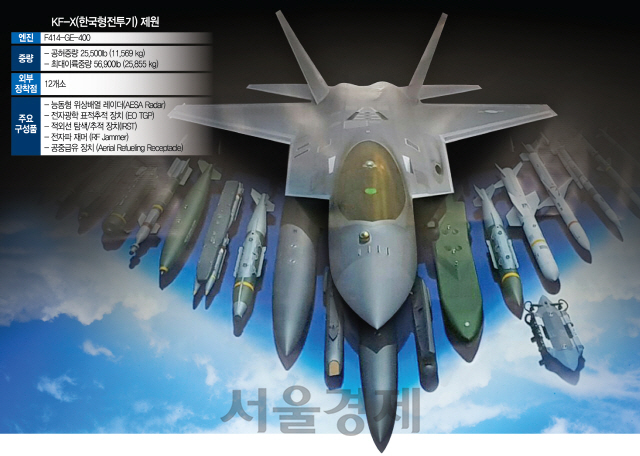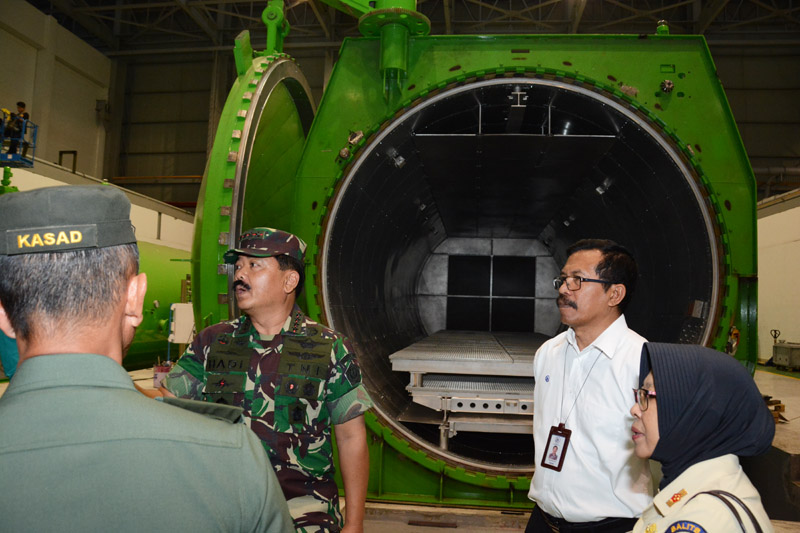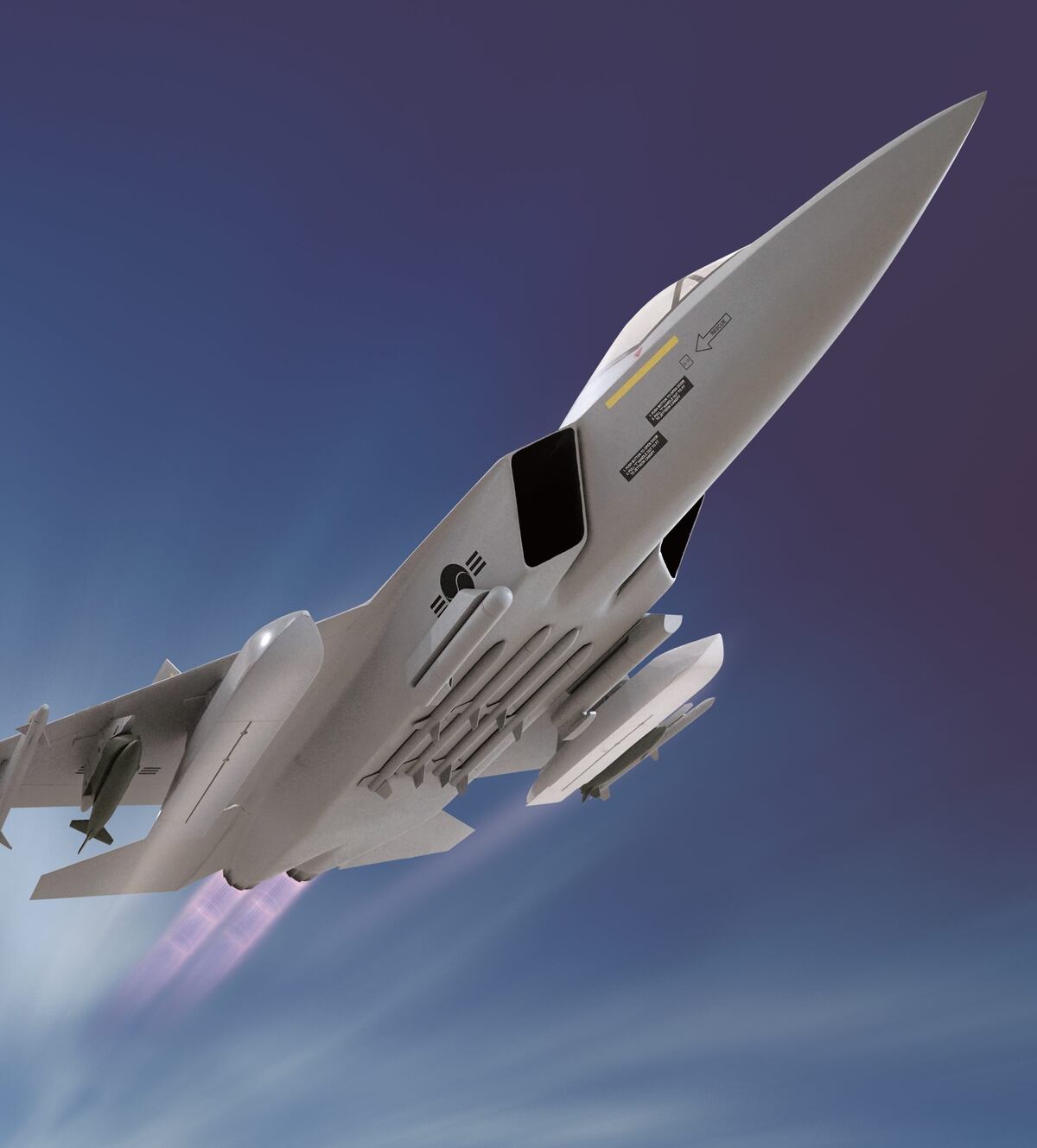Indos
PDF THINK TANK: ANALYST

- Joined
- Jul 25, 2013
- Messages
- 23,466
- Reaction score
- 24
- Country
- Location
Seems work on KAI's KF-X project is coming along (courtesy of Google Translate):

"Korea Aerospace Industries is the final model of the next Korean fighter (KF-X) which was revealed to the experts through the Korea Military Technology Society seminar held recently in Jeju Island. All of the development teams completed seven model development processes to produce the final model C109. The end of the wind tunnel test and the final model means that the internal design has been completed. / Photo provided by Dipants Times Korea
The Korean fighter aircraft (KF-X) development project will be in full swing and the final shape of the aircraft will be revealed at the end of this month.
The Defense Agency and Korea Aerospace Industries (KAI) will release the KF-X final model and AESA radar tentative on 29th. The design type name of the KF-X final model is C-109. The development team is known to have completed the design of the final model C 109 in two and a half years by conducting a wind tunnel test based on the basic data handed down from the Defense Science Research Institute (ADD) and producing a new model every six months.
The fact that the final model has been completed means that not only has the wind speed laboratory tested the maximum speed of the gas and the stability of the gas in each flight environment, but also that the internal design has been completed. The C109 exterior identification point, which was recently presented at the Korea Military Technology Society Seminar held in Jeju Island, is the addition of the Active Pia Identification Device (AIFF) near the refueling station just before the pilot's seat. It is interpreted as a signal that specific functions have begun to be installed. KF-X development has been proceeding somewhat faster than expected, even in difficult conditions such as rejection of core technology transfer by US and disagreement inside Indonesia which is a joint development partner.
The airframe is larger than the original design and the weight is increased. = When the development team first started to design the basic shape, the model was C103. The National Defense Science Institute was a gas designed by detailed simulation at the stage of exploration and development and was designed by computer simulation without actual modeling or wind tunnel test. From ADD, the development team, which received three basic drawings, including C103 and C104, made a direct reduction model from the C105 experimental gas and entered the wind tunnel test. After the test, the size of the airframe increased and the total take-off weight increased.
From the third wind tunnel test model C107, the length of the gas was increased by about 1 m from the initial design. The take-off weight of the final model C109 after wind tunnel test is 25,855 kg. It is more than a medium-sized fighter, not alittle over 20,000 kg, which was mentioned at the beginning of development. The F-18A / B Hornet has a maximum take-off weight of 24,000 kg and the F-18E / F Super Hornet is twenty-nine thousand kilograms.
There is no bad reputation for giving up the miniaturization because there is no technology, but it is expected to show its ability as a multi-purpose fighter capable of performing various functions such as air-to-air, air-to-ground, and engineering. It is rated at least two steps ahead of the Air Force's current flagship F-16 fighter. Stealth capabilities and AESA radar's ability to function can increase your attack power even further.
Hidden meaning of the completion of the final model = The test made in the large wind tunnel laboratory by making the miniature model test the maximum speed, the gas stability and motility at high speed and low speed, the thrust receiving the main wing and the tail wing according to the shape. This experiment determined the position of the engine and the shape of the inside and outside of the air intake. In the wind tunnel tests of each model, the detail changes were numerous, but the development team changed into the five-scale reduction model and produced the final model. An official from the development team said, "Basically, all internal and external designs including radar, avionics and engines, as well as various armed mounts, have been completed in the first place."
Remaining Schedule = Even if the final model came out, the wind tunnel experiment will continue. "A wind tunnel experimentfrom now on is another dimension," an official from the Korea-based fighter business development team said. "We will accumulate various data necessary for actual flight and use it for automatic computer control." The first AESA radar to be completed and the integration of various aviation equipment is also in the track. Even though the basic design is over, this game is starting now. Indonesia, which was uncertain as to whether it would continue to do business, has recently reaffirmed its principle that a joint development project with Korea is needed at the Cabinet meeting. Indonesia is participating in joint development by investing 20% ??of total project cost and purchasing 60 units. The development team will begin detailed design (CDR) work from the second half as soon as possible. It is several months earlier than the original schedule. KF-X is scheduled for release in 2021 and the first flight in 2022."
Original news:
http://www.sedaily.com/NewsView/1S0TIC8G6S/GE05

"Korea Aerospace Industries is the final model of the next Korean fighter (KF-X) which was revealed to the experts through the Korea Military Technology Society seminar held recently in Jeju Island. All of the development teams completed seven model development processes to produce the final model C109. The end of the wind tunnel test and the final model means that the internal design has been completed. / Photo provided by Dipants Times Korea
The Korean fighter aircraft (KF-X) development project will be in full swing and the final shape of the aircraft will be revealed at the end of this month.
The Defense Agency and Korea Aerospace Industries (KAI) will release the KF-X final model and AESA radar tentative on 29th. The design type name of the KF-X final model is C-109. The development team is known to have completed the design of the final model C 109 in two and a half years by conducting a wind tunnel test based on the basic data handed down from the Defense Science Research Institute (ADD) and producing a new model every six months.
The fact that the final model has been completed means that not only has the wind speed laboratory tested the maximum speed of the gas and the stability of the gas in each flight environment, but also that the internal design has been completed. The C109 exterior identification point, which was recently presented at the Korea Military Technology Society Seminar held in Jeju Island, is the addition of the Active Pia Identification Device (AIFF) near the refueling station just before the pilot's seat. It is interpreted as a signal that specific functions have begun to be installed. KF-X development has been proceeding somewhat faster than expected, even in difficult conditions such as rejection of core technology transfer by US and disagreement inside Indonesia which is a joint development partner.
The airframe is larger than the original design and the weight is increased. = When the development team first started to design the basic shape, the model was C103. The National Defense Science Institute was a gas designed by detailed simulation at the stage of exploration and development and was designed by computer simulation without actual modeling or wind tunnel test. From ADD, the development team, which received three basic drawings, including C103 and C104, made a direct reduction model from the C105 experimental gas and entered the wind tunnel test. After the test, the size of the airframe increased and the total take-off weight increased.
From the third wind tunnel test model C107, the length of the gas was increased by about 1 m from the initial design. The take-off weight of the final model C109 after wind tunnel test is 25,855 kg. It is more than a medium-sized fighter, not alittle over 20,000 kg, which was mentioned at the beginning of development. The F-18A / B Hornet has a maximum take-off weight of 24,000 kg and the F-18E / F Super Hornet is twenty-nine thousand kilograms.
There is no bad reputation for giving up the miniaturization because there is no technology, but it is expected to show its ability as a multi-purpose fighter capable of performing various functions such as air-to-air, air-to-ground, and engineering. It is rated at least two steps ahead of the Air Force's current flagship F-16 fighter. Stealth capabilities and AESA radar's ability to function can increase your attack power even further.
Hidden meaning of the completion of the final model = The test made in the large wind tunnel laboratory by making the miniature model test the maximum speed, the gas stability and motility at high speed and low speed, the thrust receiving the main wing and the tail wing according to the shape. This experiment determined the position of the engine and the shape of the inside and outside of the air intake. In the wind tunnel tests of each model, the detail changes were numerous, but the development team changed into the five-scale reduction model and produced the final model. An official from the development team said, "Basically, all internal and external designs including radar, avionics and engines, as well as various armed mounts, have been completed in the first place."
Remaining Schedule = Even if the final model came out, the wind tunnel experiment will continue. "A wind tunnel experimentfrom now on is another dimension," an official from the Korea-based fighter business development team said. "We will accumulate various data necessary for actual flight and use it for automatic computer control." The first AESA radar to be completed and the integration of various aviation equipment is also in the track. Even though the basic design is over, this game is starting now. Indonesia, which was uncertain as to whether it would continue to do business, has recently reaffirmed its principle that a joint development project with Korea is needed at the Cabinet meeting. Indonesia is participating in joint development by investing 20% ??of total project cost and purchasing 60 units. The development team will begin detailed design (CDR) work from the second half as soon as possible. It is several months earlier than the original schedule. KF-X is scheduled for release in 2021 and the first flight in 2022."
Original news:
http://www.sedaily.com/NewsView/1S0TIC8G6S/GE05














